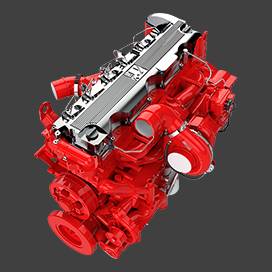aug . 16, 2024 21:41 Back to list
Best Practices for Replacing Brake Drums Efficiently and Safely
Replacing Brake Drums A Comprehensive Guide
Brake drums are critical components of a vehicle's braking system, especially in older cars that utilize drum brakes instead of modern disc brakes. While disc brakes have become the standard in many vehicles due to their superior performance, brake drums still play a vital role in ensuring vehicles stop effectively and safely. Over time, brake drums can wear out, become damaged, or lose their effectiveness, necessitating replacement. This article provides a comprehensive guide to replacing brake drums, highlighting the importance of this maintenance task, the tools required, and the step-by-step process involved.
Understanding Brake Drums
Brake drums are cylindrical components that encase the brake shoes. When you press the brake pedal, hydraulic pressure forces the brake shoes against the inner surface of the drum, creating friction that slows down or stops the vehicle. While drum brakes are less effective than disc brakes in dissipating heat, they remain prevalent in many cars, especially in the rear braking system of light trucks and older models.
As brake drums age, they can develop grooves, warping, or excessive wear, leading to reduced braking efficiency and an increase in stopping distance. Symptoms of worn brake drums include unusual noises during braking, vibrations, or a feeling that the car is not stopping as quickly as usual. If these symptoms are recognized, it’s crucial to address them promptly by replacing the brake drums.
Tools and Materials Needed
Before embarking on a brake drum replacement project, it’s essential to gather the necessary tools and materials
1. Jack and Jack Stands For safely lifting the vehicle. 2. Lug Wrench To remove the wheel nuts. 3. Brake Drum Tool Kit For removing and installing the brake drum. 4. New Brake Drums Ensure they are compatible with your vehicle. 5. Brake Shoes (if necessary) It’s often recommended to replace these simultaneously with the drums. 6. Grease and Brake Cleaner For lubricating and cleaning components. 7. Safety Gear Gloves, goggles, and a dust mask to protect yourself during the process.
Step-by-Step Process for Replacing Brake Drums
1. Preparation Start by parking the vehicle on a level surface and engaging the parking brake. Gather all your tools and materials.
replacing brake drums

2. Lift the Vehicle Use the jack to lift one side of the vehicle, then secure it with jack stands to prevent any accidents.
3. Remove the Wheel Use the lug wrench to remove the wheel nuts and take off the wheel, exposing the brake drum assembly.
4. Inspect the Brake Assembly Before removing the drum, check the condition of the brake shoes and other components for wear or damage.
5. Remove the Brake Drum If the drum does not come off easily, it may be necessary to use a brake drum puller. Once removed, inspect the drum for wear or cracks.
6. Install New Brake Shoes If you have new brake shoes, now is the time to install them. Follow the manufacturer’s instructions for positioning and securing them.
7. Install the New Brake Drum Place the new drum onto the brake assembly. Ensure it fits snugly and spins freely without obstruction.
8. Reattach the Wheel Once the drum is installed, place the wheel back on and hand-tighten the lug nuts. Lower the vehicle and then tighten the nuts fully in a star pattern for even distribution.
9. Test the Brakes Before hitting the road, pump the brakes a few times to ensure they are properly engaged.
Conclusion
Replacing brake drums is a crucial maintenance task that ensures your vehicle remains safe and functional. By understanding how brake drums work, recognizing the signs of wear, and following the proper replacement procedure, you can effectively tackle this task yourself. Regular maintenance not only prolongs the lifespan of your vehicle's braking system but also enhances your safety on the road. Always remember to consult your vehicle’s manual for specific instructions related to your car model, and when in doubt, seek professional assistance.
-
Brake Drum Man - High-Quality Drum Brake Drums & Brake Shoes for Reliable Performance
NewsJun.24,2025
-
High-Quality Brake Drum Kamaz – Durable Drum Brake Drum & Brake Shoe Replacement
NewsJun.10,2025
-
High-Quality Brake Drum Liza for Drum Brake Systems - Superior Durability and Performance
NewsJun.10,2025
-
High-Quality Brake Drum Kamaz – Durable Drum Brake Drum & Brake Shoe Solutions
NewsJun.10,2025
-
Durable Kamaz Brake Drums High-Performance Truck Parts
NewsJun.09,2025
-
Premium Brake Drum Maz Kit with Shoes Enhanced Braking
NewsJun.09,2025
